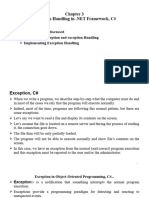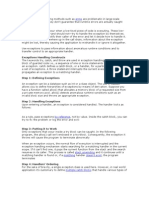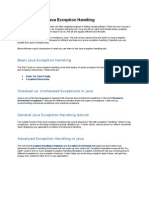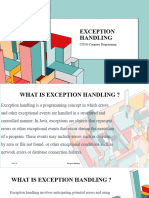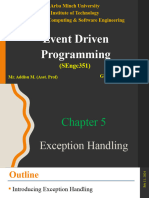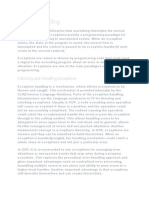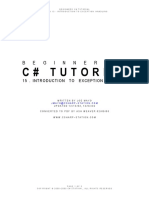0% found this document useful (0 votes)
15 views12 pagesException Handling CSharp
The document provides an overview of exception handling in C#, emphasizing its importance for preventing application crashes and improving robustness. Key constructs include try-catch-finally blocks, throwing exceptions, and creating custom exceptions, along with best practices for effective handling. Overall, it highlights the significance of managing runtime errors to ensure smooth program execution.
Uploaded by
aswaniCopyright
© © All Rights Reserved
We take content rights seriously. If you suspect this is your content, claim it here.
Available Formats
Download as PPTX, PDF, TXT or read online on Scribd
0% found this document useful (0 votes)
15 views12 pagesException Handling CSharp
The document provides an overview of exception handling in C#, emphasizing its importance for preventing application crashes and improving robustness. Key constructs include try-catch-finally blocks, throwing exceptions, and creating custom exceptions, along with best practices for effective handling. Overall, it highlights the significance of managing runtime errors to ensure smooth program execution.
Uploaded by
aswaniCopyright
© © All Rights Reserved
We take content rights seriously. If you suspect this is your content, claim it here.
Available Formats
Download as PPTX, PDF, TXT or read online on Scribd
/ 12
